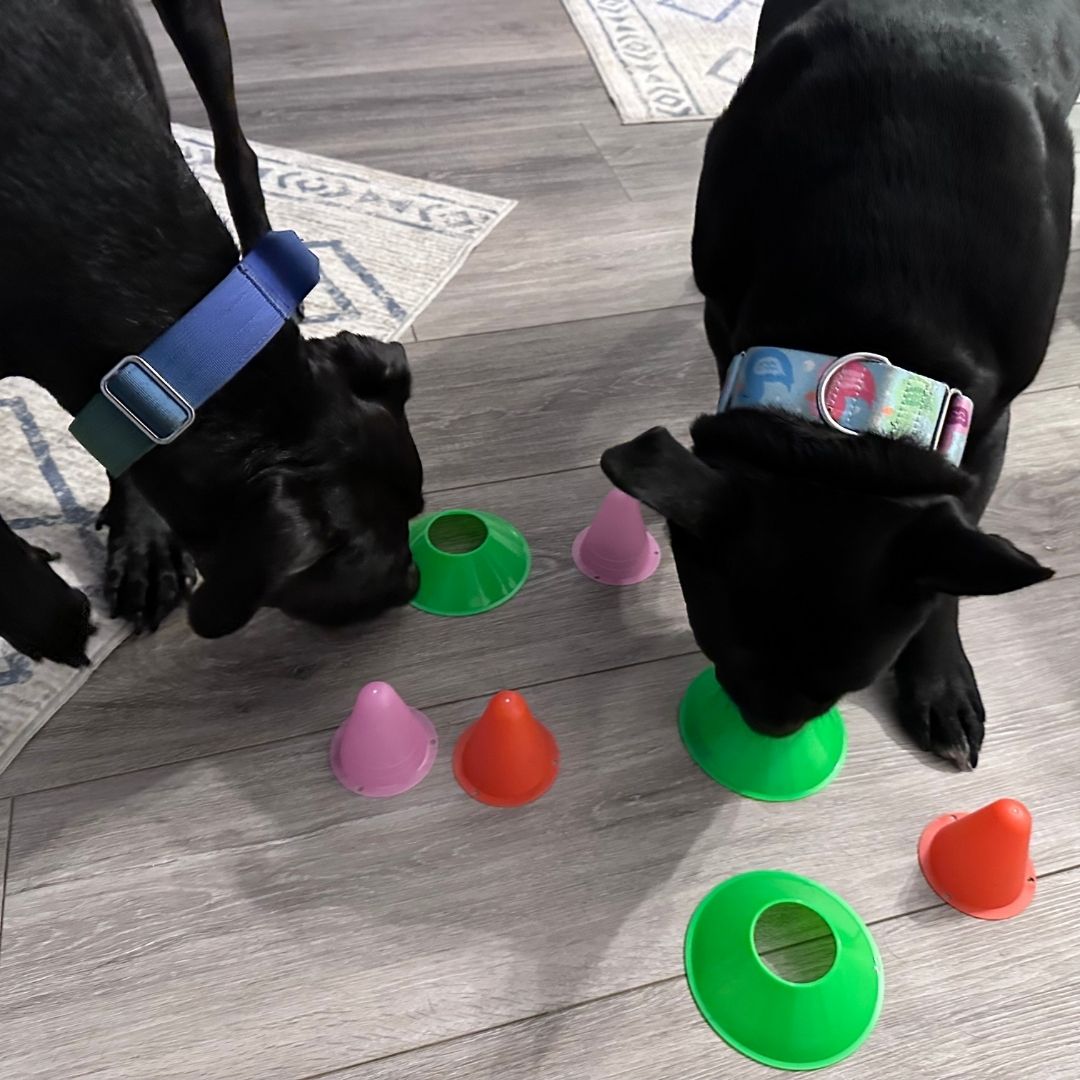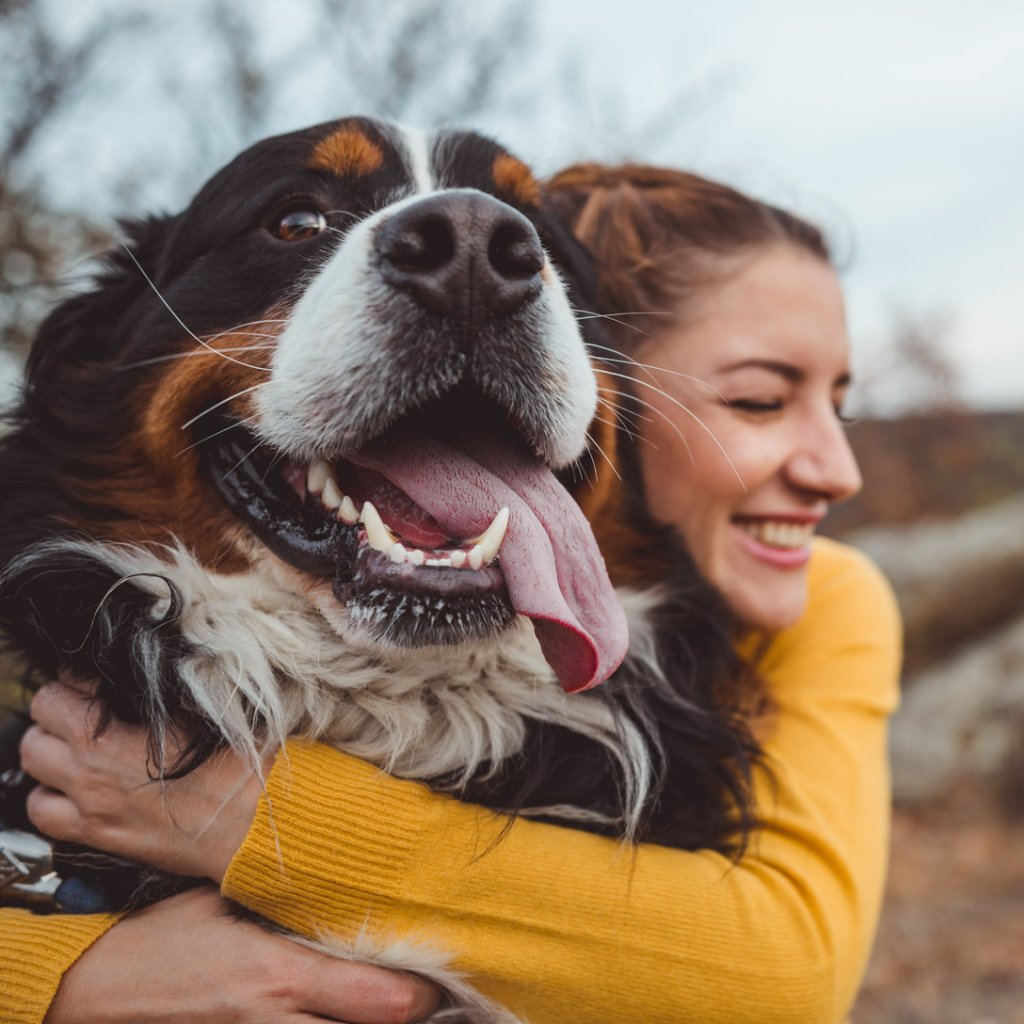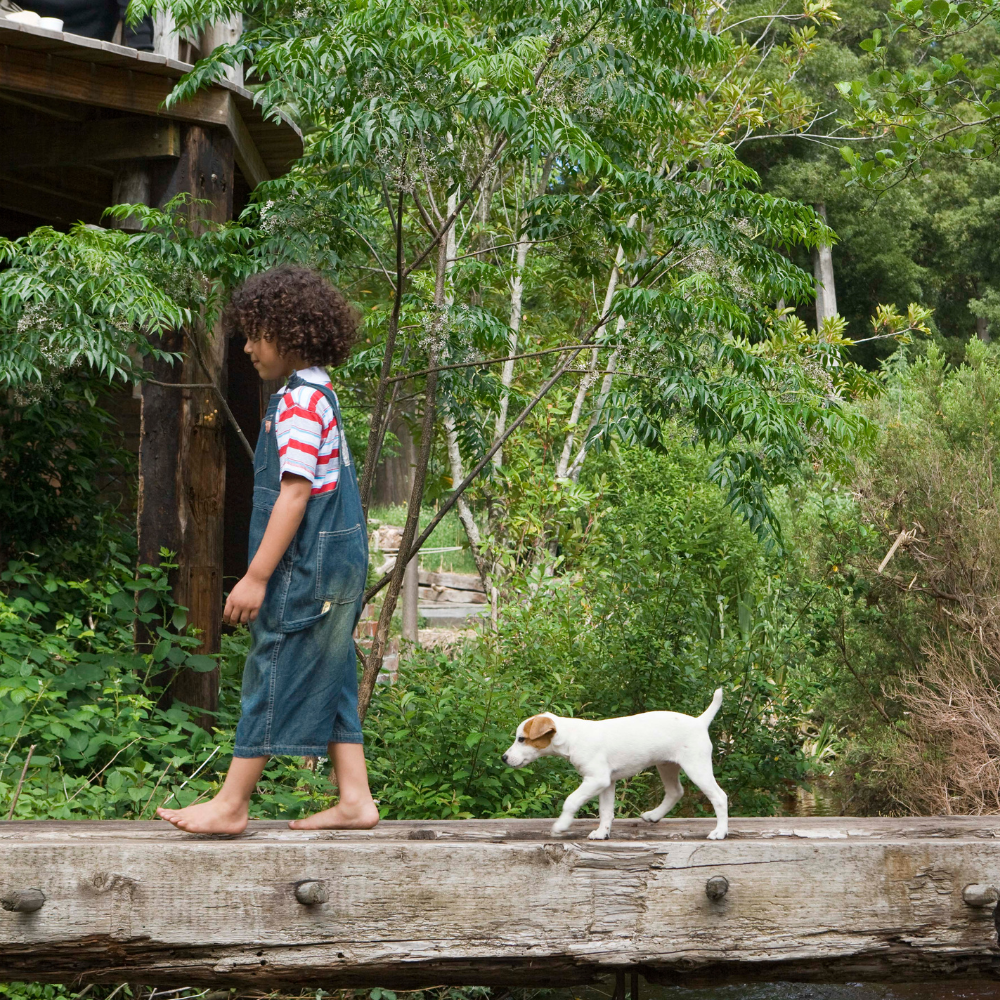As dog guardians, we all want our dogs to be emotionally balanced and responsive to us and their environment. One area that often gets overlooked is impulse control.
I mean, it might even get overlooked in your personal life too, ha. It sure does in mine from time to time.
Teaching your pup to regulate their impulses can lead to increased focus, more positive interactions with their environment, and a stronger bond between you and your dog. I want to share with you five engaging games that you can easily play with your dog to improve their self-control and help regulate their emotional state in a more positive and rewarding way.
Learn the Benefits of Emotional SelfControl
Before we get into the games, let's look at why this is so important for our four-legged friends to be able to regulate their impulses and emotional state.
Have you ever noticed that dogs with good impulse control seem to do better when handling various situations, from resisting the urge to chase after a squirrel to waiting patiently for their food?
Have you ever noticed how you feel in an environment where you can regulate your impulses, compared to one where you can't?
This one skill can help prevent unwanted behaviors, reduce anxiety, and make your dog more responsive to cues.
By incorporating impulse control games into your dog's routine, you're not only providing mental stimulation (wahoo) but you are also setting your dog up for success in their daily life.
Play Games to Teach Emotional SelfControl
Benefits
This game teaches your dog that waiting for food is fun and rewarding. This can even be particularly helpful during mealtimes or when you're preparing food in the kitchen.
Tips/Variations
-
Gradually increase the duration and reward your dog along the way.
-
Try placing the treat on the floor instead of in your hand for an added challenge.
-
Use different types of treats to keep the game interesting and rewarding.
Game 2: Sit and Stay
How to Play
-
Ask your dog to sit and stay in a specific spot.
-
Walk a short distance away (start with just a few steps).
-
If your dog stays put, return and reward them with praise and a treat.
-
If they move, calmly guide them back to the original spot and try again.
-
Gradually increase the distance and duration of the stay.
Benefits
This classic game improves your dog's ability to remain calm and focused, even when you're not right next to them. It's an excellent foundation for more advanced training and can be particularly useful in real-life situations like waiting at crosswalks or greeting guests at the door.
Tips/Variations
-
Add distractions like toys or other people to make the game more challenging.
-
Practice in different locations, both indoors and outdoors.
-
Try incorporating hand signals along with verbal commands for better communication.
Game 3: Leave It
How to Play
-
Place a low-value treat on the floor and cover it with your hand.
-
When your dog shows interest, say "Leave it."
-
Wait for your dog to stop trying to get the treat and look at you.
-
As soon as they look at you, mark with a "yes" or click and offer a higher-value treat from your other hand.
-
Gradually make the game more challenging by uncovering the treat on the floor.
Benefits
The "Leave it" cue is something that is debated in the training community. I personally teach my dogs to "leave it" for many reasons. The key to this cue is to teach it in a fun and positive way. This cue can be crucial for your dog's safety, teaching them to ignore potentially harmful or inappropriate items. This game helps reinforce the cue in a fun, positive way, making it more likely that your dog will respond in real-life situations.
Tips/Variations
-
Use different objects instead of treats, such as toys or household items.
-
Practice the game while on walks, using real-world distractions.
-
Increase difficulty by placing the item closer to your dog or using more tempting treats.
Game 4: The Shell Game
How to Play
BenefitsThis game not only tests your dog's impulse control but also engages their problem-solving skills and memory. It's an excellent way to provide mental stimulation and build focus, which can help reduce anxiety and boredom-related behaviors. Tips/Variations
|
 |
Game 5: Follow the Leader
Play Impulse Control Games For Dogs
Incorporating these five impulse control games into your dog's routine can lead to significant improvements in their behavior and overall well-being. Not only do these games provide mental stimulation and physical exercise, but they also strengthen the bond between you and your pup. Remember to keep the sessions short, fun, and positive, gradually increasing the difficulty as your dog improves. I recommend 10-15 minute bursts of fun lessons.
By consistently practicing these games, you'll likely notice your dog feeling more comfortable and even handling environmental stimuli more positively.
So why not give impulse control games for dogs a try? Your dog will thank you for the fun and engaging playtime, and you'll enjoy the benefits of a balanced and mentally stimulated companion.
Remember, every dog is unique, so be patient and adjust the games as needed to suit your dog's personality and skill level.
With time and practice, you'll both be masters of impulse control!
Looking for additional help? Check out the behavior consultation options where I use an enrichment lens to teach you and your dog how to live a happy and emotionally healthy life together.

Learn More About Behavior Consultations
Additional Resources:
For more information on working with impulses and your dog, check out these helpful resources:

